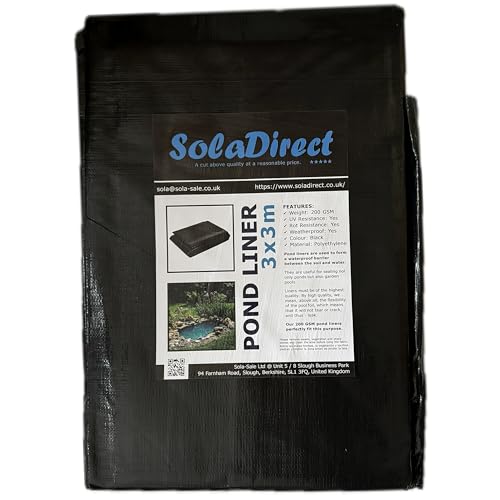Blue Pond Liners: A Comprehensive Guide to Enhancing Your Pond Aesthetics and Functionality
A well-maintained pond can be a beautiful addition to any landscape, offering a serene oasis for relaxation and an attractive focal point for your garden. Choosing the right pond liner is essential for both the aesthetic appeal and the overall health of your pond. In this article, we delve into the world of blue pond liners, discussing their benefits, types, installation, and maintenance.
Benefits of Blue Pond Liners Over Black Pond Liners
- Aesthetic Appeal: Blue pond liners provide a more vibrant and natural appearance compared to black liners. The blue hue resembles the sky’s reflection on the water, creating a soothing ambiance that complements the surrounding landscape.
- Enhanced Visibility of Fish: The blue color of the pond liner provides a striking contrast against the fish, making them more visible and easier to observe. This is particularly beneficial for koi fish enthusiasts who take pride in showcasing the vivid colors and patterns of their prized koi.
- Algae Control: Blue pond liners can help inhibit algae growth by limiting sunlight penetration into the water. In contrast, black liners may absorb more heat and promote algae growth, requiring more frequent cleaning and maintenance.
- Temperature Regulation: The blue color of the liner reflects sunlight, helping to keep the water cooler during hot summer months. This can be especially beneficial for temperature-sensitive fish species like koi, which thrive in cooler waters.
- Reduced Fish Stress: Fish can become stressed in ponds with black liners due to the lack of contrast between the liner and the fish. A blue liner provides a more visually appealing and less stressful environment for the fish, promoting their overall health and well-being.
- Popular Choice Among Koi Enthusiasts: Blue pond liners are widely favored by koi fish hobbyists due to their ability to enhance fish visibility, reduce algae growth, and maintain cooler water temperatures. These factors contribute to a healthier and more visually appealing koi pond.
- Easy Detection of Debris: Blue pond liners make it easier to spot debris or sediment buildup on the liner’s surface, allowing for timely maintenance and cleaning. In contrast, debris on a black liner may blend in and be less noticeable.
Types of Blue Pond Liners
- EPDM Rubber: Ethylene Propylene Diene Monomer (EPDM) rubber is a popular choice for blue pond liners due to its flexibility and durability. EPDM liners can easily conform to the shape of your pond, making them suitable for a variety of designs. They are also resistant to UV radiation, extreme temperatures, and punctures.
- PVC: Polyvinyl chloride (PVC) liners are another common option for blue pond liners. While they are generally less expensive than EPDM liners, they are also less flexible and may become brittle over time, especially in colder climates.
- RPE: Reinforced Polyethylene (RPE) liners are a lightweight and cost-effective alternative to EPDM and PVC liners. RPE blue pond liners are puncture-resistant and UV-stabilised, ensuring a long-lasting solution for your pond.
In conclusion, blue pond liners offer numerous advantages over black pond liners, particularly for koi fish enthusiasts. The aesthetic appeal, enhanced visibility of fish, and improved pond health make blue liners an ideal choice for those looking to create a visually stunning and healthy pond environment.
No products were found matching your selection.










